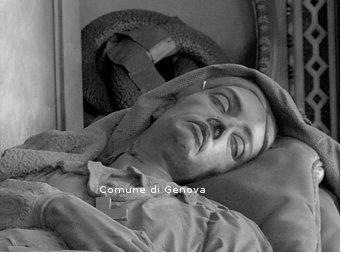With this harsh and severe work, Benetti has presented perhaps the first example of an idea of the death which would become very common during the bourgeois Realism in the 1870’s and 1880’s: the young woman which lies on her deathbed (an eclectic sofa) shows on her face, which has been left uncovered by the uplifted veil, the clear signs of a long illness. Her pose is dignified, but the bedspread has almost slid off onto the ground, in order to emphasize the end of a long suffer. From the wall, her husband’s bust wathches over her: Giuseppe Pignone, a rich businessman, has been known for having contributed to the foundation of the Lloyd Italico, a prominent shipping company, and for having held several public offices. The higher part of the monument presents a more classical style, with a tympanum in its frontal part, a cross, two angels, an allegory of the Prayer on the left, and an allegory of the Resurrection on the right. It’s a representation of the death which, even if it is inspired to some past models – there are some references to many Renaissance tombs of the Tuscany and to Lorenzo Bartolini’s 19th-century monument dedicated to the countess Zamoyska, all of which can now be found in the Church of “Santa Croce” in Florence – it detaches itself from them, because it stresses both the everyday and the real dimension.



